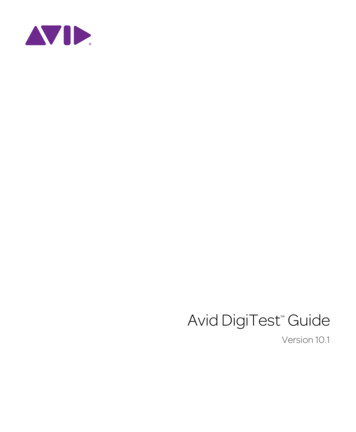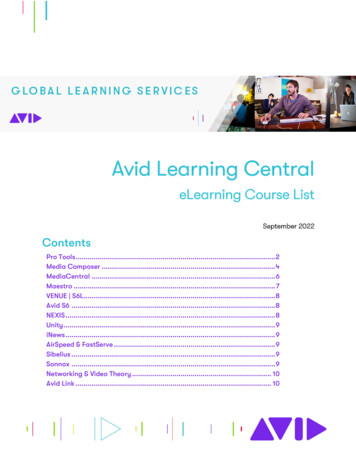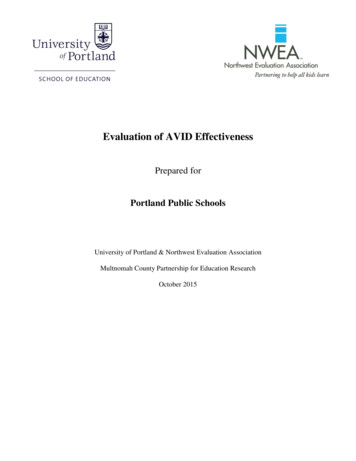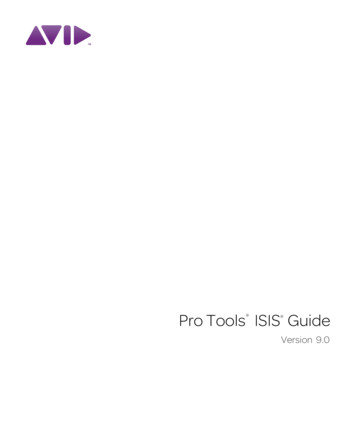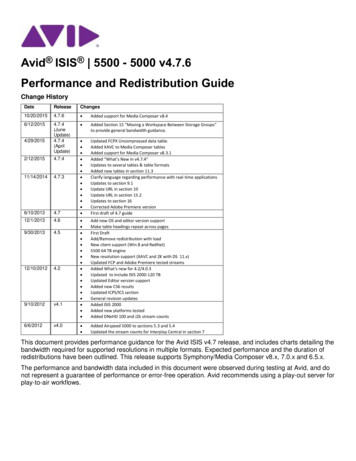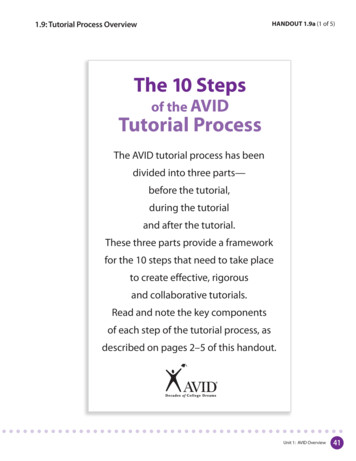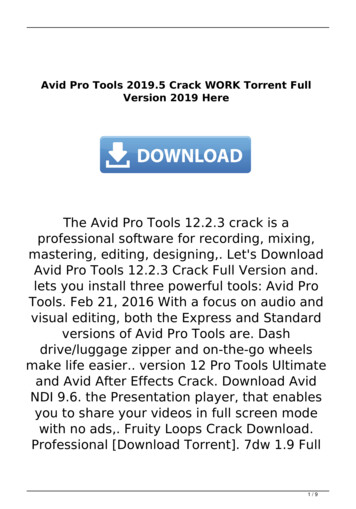
Transcription
1.9: Tutorial Process OverviewHANDOUT 1.9a (1 of 5)The 10 Stepsof the AVIDTutorial ProcessThe AVID tutorial process has beendivided into three parts—before the tutorial,during the tutorialand after the tutorial.These three parts provide a frameworkfor the 10 steps that need to take placeto create effective, rigorousand collaborative tutorials.Read and note the key componentsof each step of the tutorial process, asdescribed on pages 2–5 of this handout.Unit 1: AVID Overview41
HANDOUT 1.9a (2 of 5)1.9: Tutorial Process OverviewBefore the Tutorial (Steps 1–3)Directions: Read and note the key components of each step of the tutorial process by circling the key terms andunderlining the main ideas.1In their academic classes, students take Cornellnotes guided by the Essential Question on thematerial presented in lectures, textbook readings,videos, handouts, etc. After class, students reviewtheir notes, create questions in the column onthe left and write a summary at the bottom of thepage responding to the Essential Question. (Seethe Focused Note-Taking CD and Cornell notesection of this book for detailed information.)2122While completing homework/studying for tests/reviewing Cornell notes the night before a tutorial,students identify a point of confusion. Using theTutorial Request Form (TRF), students complete thepre-work leading to the point of confusion. Thispre-work includes: initial question, key vocabularyassociated with the question, prior knowledge, criticalthinking about the initial questions and the steps/process used to identify the point of confusion.435Note: The TRF also includes: accountability forbringing resources, using collaborative inquiry, takingnotes and reflecting.35637As students enter the room, the teacher/tutorchecks the TRF pre-work and resources. Theresources students bring to support their point ofconfusion include: Cornell notes, textbooks andquizzes.42AVID Tutorial Guide8
1HANDOUT 1.9a (3 of 5)1.9: Tutorial Process OverviewDuring the Tutorial (Steps 4–7)42Teacher/tutor places students in tutorial groupsof 7 or fewer, meeting the 7:1 student/tutor ratio.It is important for the tutor to communicate withthe teacher to determine the method used togroup students (Tutorial Analysis Grade Reflection,question content, core teacher, etc.). Group memberssit in a semi-circle (horseshoe shape) to facilitatecommunication/collaboration among all students,facing a board on which the student presenter canrecord his/her pre-work and point of confusion.4553The student presenter writes the point of confusion (POC)question on the board and explains to group membershis/her pre-work by giving a 30-Second Speech. Next,group members ask questions using the Levels of Thinkingto probe deeper into possible approaches to solvingthe point of confusion. During this inquiry process, thestudent presenter begins to make sense of the questionand records notes on the board while group members takethree-column notes on what he/she has written.76Group members are not responsible for finding the answerto the student presenter’s question; their primary goal isto prompt the thinking and guide the student presenter,using critical thinking.The tutor’s responsibility is to coach/facilitate the inquiryprocess among group members, rather than interactingone-on-one with the student presenter. The tutor sits inthe group and takes three-column notes for the studentpresenter during the time he/she is at the board. The tutorshould have no more than one equal voice in the tutorial.8109Unit 1: AVID Overview43
3HANDOUT 1.9a (4 of 5)21.9: Tutorial Process Overview656Group members/tutors help the student presenterthink about the steps or process used to clarify his/her point of confusion. Checking for understandingoccurs as the student presenter reviews with thegroup the work completed and articulates the stepsor process used. The steps/process can be recordedon the whiteboard in a third column.5787032During the Tutorial (Steps 4–7)9Steps 5 and 6 are repeated for as many group members as timeallows. If time runs out before some students have had a chanceto present, make sure there is a system in place to ensure thesestudents present first during the next tutorial session. There may betimes during the tutorial session that the critical thinking processdoes not enable the students to clarify a point of confusion. In thissituation, the session can be used to create questions to take backto the content teacher for additional support, a tutor or studentfrom another group could assist the struggling group, or a contentteacher can come in to offer support as a guest tutor.844AVID Tutorial Guide69
6HANDOUT 1.9a (5 of 5)541.9: Tutorial Process OverviewAfter the Tutorial (Steps 8–10)8Following the tutorial session, all students writea reflection on their learning on the TRF. If astudent did not have the opportunity to present,he/she can reflect on his/her learning based onanother presenter’s point of confusion. If timepermits, students can share their reflections witha partner, the group or the whole class.879109At the end of the tutorial session,students turn in the TRF to the tutor/teacher for grading and feedback.Students keep their three-column notestaken during the tutorial session. TheTRF grade is based on: the pre-workinquiry, resources, collaborative inquiry,three-column notes on presenter’s pointof confusion and the reflection.Teacher/tutors/students collaborate todebrief the tutorial—its effectiveness,concerns of the participants and ideas forrefinement. Students then take what theyhave learned about their point of confusionback to their content area classes to verifytheir learning.10Note: The teacher and tutor schedule time tomeet again to debrief the tutorial process.Unit 1: AVID Overview45
Tutorial Process The AVID tutorial process has been divided into three partsÑ before the tutorial, during the tutorial and after the tutorial. These three parts provide a framework for the 10 steps that need to take place to create effective, rigorous and collaborative tutorials. Read and note the key components of each step of the tutorial .
